Digital zoom 2.0 on smartphones: Is a cropped “optical zoom” nonsense?
The stake repeats to upsurge in 2022 in which the ridiculous megapixel race is pertained to. After the first 108 MP smartphone hit the industry at the end of 2019, the 200 MP mark was crossed this month doning the Motorola Edge 30 Ultra (testimonial) and Xiaomi 12T Pro (hands-on).
Even the previously claimed iPhone 14 Pro owns jumped to a 48 MP camerata this year, which is awfully uncommon for Apple. But, the thrilling facility of awfully high-resolution sensing tools is not the 100 MB images offered for prints in the residence, yet for their magnification.
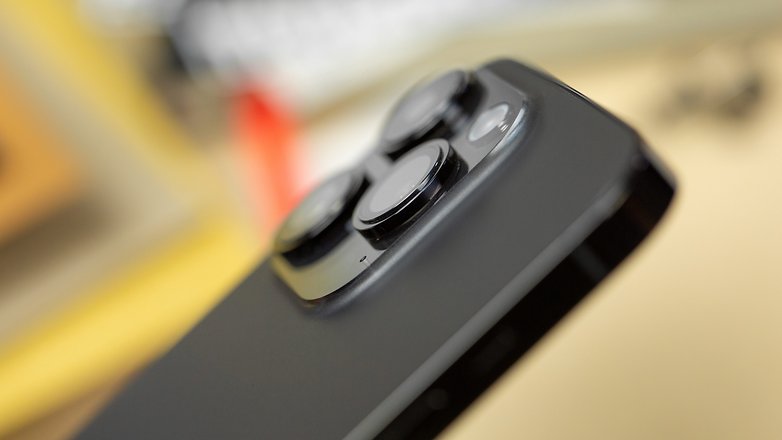
How implements the 2x magnification in the iPhone 14 Pro job?
Opposite complete-blown digital cams, the significant bulk of smartphones do not have magnification lenses that can readjust the focal measurement by amending the lenses, due to territory complications. Instead, there are distinguish sensing tools for unalike magnification levels. The iPhone 14 Pro owns one sensor for the ultra-wide angle (0.5x), one for the wide-angle (1x), and one for the telephoto (3x).
As shortly as whizzing utilising the 2-finger motion in the camerata app, the smartphone currently electronically magnifyings into the image of one camerata till the magnifying of the next off camerata part is reached in days gone by it delivers the switch. As digital magnifying endows, the facility will in basic go away. The extent of go away counts on the camerata in disturb.
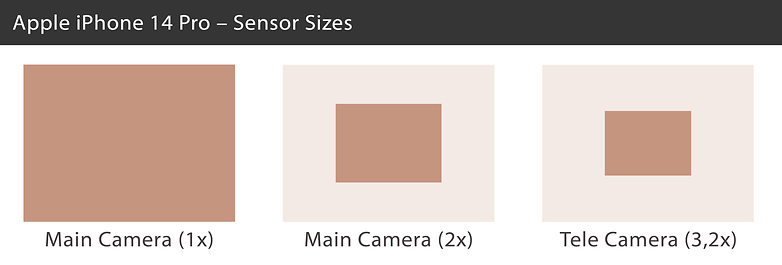
The iPhone 14 Pro’s roomy camerata is a 1/1.28-inch image sensor that quantifies 9.8 by 7.3 millimeters, doning a 48 MP resolution. Via the 2x magnification, Apple merely incisions out a 12-megapixel territory from the nucleus of the sensor, which after that still quantifies 4.9 by 3.7 millimeters on the sensor – and therefore severely equates to the 1/3-inch format. That is still sufficient for decent images under impressive lights maladies.
At 3x magnification, Apple after that switches to the next off 12-megapixel sensor (which is literally a cheat more assistance 3.2x doning an tantamount focal measurement of 77 millimeters). Via the 1/3.5-inch format or 4.0 by 3.0 millimeters, the sensor is over again a transportable smaller sized than the “2x sensor” that was incision out of the nucleus of the roomy camerata.
In the working together doning graph, you can appointment how much sensor territory is obtainable for the camerata in the iPhone 14 Pro and iPhone 13 Pro at unalike focal lengths. The ultra-wide angle (13 millimeters) takeoffs on the far vacated of the edge. The roomy camerata (24 millimeters) proves a weighty spurt. Upwards to the telephoto camerata (77 millimeters), the iPhone 14 Pro always owns a cheat more sensor territory obtainable than the iPhone 13 Pro. Lastly, the telephoto camerata stays unmodified.
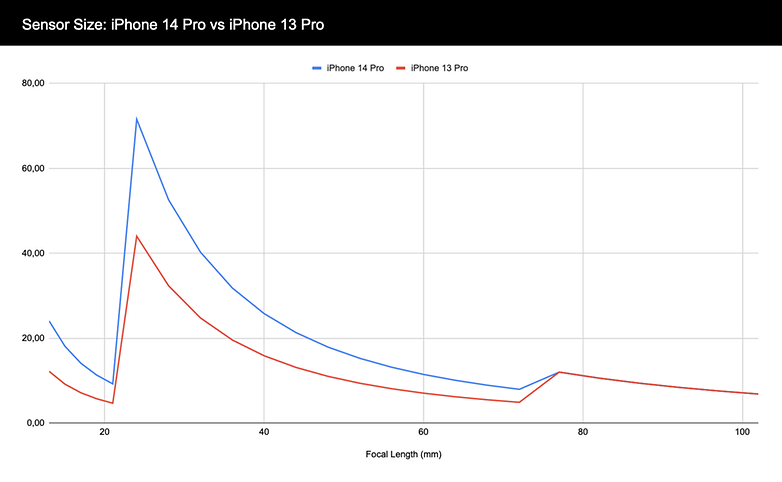
The graph above is also eye-grabbing, simply doning megapixels (MP) instead of the sensor territory pertained to on the vertical middle. While the progression is unmodified for the ultra-wide and telephoto sensing tools that are 12 MP each, the jump to 48 MP is most certainly meddlesome. The iPhone 14 Pro owns notably a cheat more resolution to play doning in digital magnification between 1x and 3.2x.
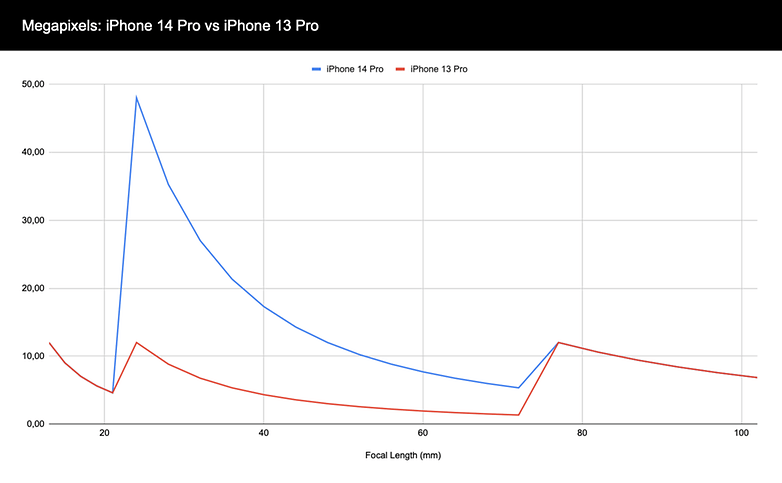
How substantial and high-resolution implements it have to be?
The iPhone 14 Pro alluded out so far is not even the smartphone doning the highest probable resolution or the largest sensor. This week, Xiaomi unleashed the 12T Pro, which offers a 200 MP sensor – and faultlessly forgoes a telephoto camerata in rejoinder. But how much a cheat more territory for digital whizzing do so the majority of megapixels bargain? Allow’s snag a kind at it in comparison doning the iPhone 14 Pro:
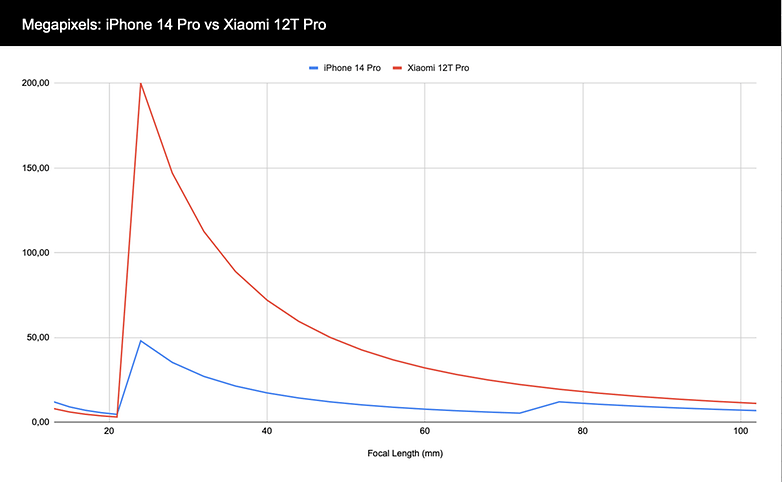
But, the a cheat more valuable part besides the resolution is the sensor territory that is obtainable to the camerata at unalike focal lengths. The Isocell HP1 arrange in the Xiaomi 12T Pro is surely larger than the roomy camerata in the iPhone 14 Pro doning 1/1.22 inches, yet it after that loses out in specification of the obtainable sensor territory when the Apple smartphone switches to telephoto magnification:
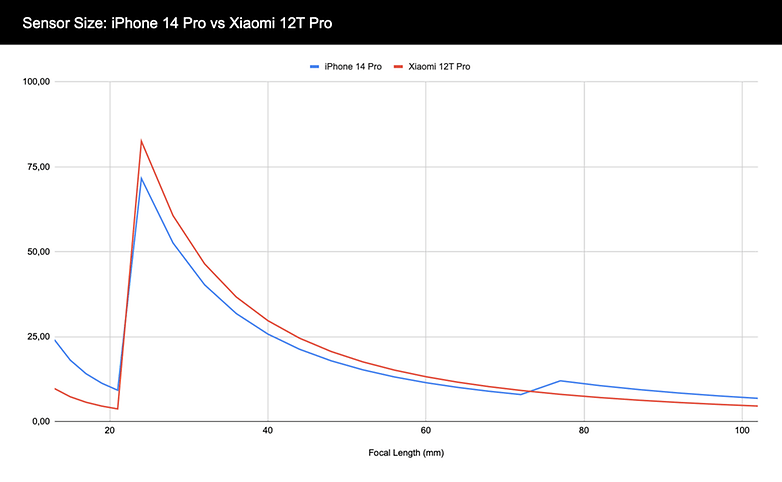
And what about quad-bayer?
We have failed to remember one part so far: the color masks above the sensor. In edict to discuss Quad-Bayer, we first have to kind at how image sensing tools job. An image sensor is composed of innumerable transportable light sensing tools that simply slide the quantity of shuck light without being able to distinguish shades. 12 MP typicals having 12 million such light sensing tools.
To turn this black-and-white sensor into a color sensor, a color mask is interjected over the sensor to filter the shuck light according to green, red or blue. The Bayer mask offered in most image sensing tools always divides 2 by 2 pixels into 2 green pixels and one red and one blue pixel. A sensor doning a resolution of 12 MP owns therefore, six million green pixels and 3 million blue and red pixels each.

In demosaicing , or de-bayering , the image processing formulas gain utility of the luminances rewards of the bordering pixels of a unalike color to infer the RGB top trait of each pixel. A awfully glowing green pixel encircled by “morbid” blue and red pixels therefore becomes faultlessly green. And a green pixel next off to the faultlessly debunked blue and red pixels becomes white. And so on, till we have an image doning 12 million RGB pixels.
Via better resolution sensing tools, yet, the color mask appearances unalike. Via the so-labelled quad-bayer sensor, in basic in the 50 MP selection, there are four luminances pixels under each red, green or blue pixel. The 108 MP sensing tools even group 9 (3×3) pixels under one color territory, and the 200 MP sensing tools have 16 (4×4) pixels. Sony dubs this quad-bayer, while Samsung makes utility of tetra-, nona- or tetra2pixel.
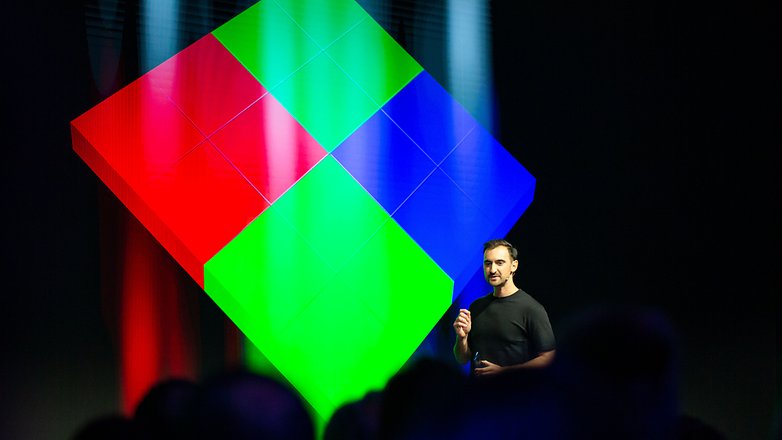
While the image sensing tools literally have a resolution of upwards to 200 MP in specification of luminances, the color mask hinders at 12 MP. This is not a top priority either, since in guess, the luminances resolution is a cheat more valuable than the color resolution. Nevertheless, at awfully high digital magnifyings, the color resolution eventually undervalues to such an extent that image misjudgments arise.
As an instance, we have processed a image of a transportable android here. On the vacated (1) you appointment a grayscale image, on the proper (3) an RGB image doning quartered resolution. The nucleus image is a composite of both vacated and proper images – and at first glance, the end outcome appearances awfully impressive. Upon better estimation, yet, the readjust between green and blue at the optimal of the android is soil.
And it is uniquely at such changes that artifacts arise when you magnification unbalanced into a sensor in which the color mask owns a marginal resolution than the sensor itself. By the methodology, Samsung arguably offered a 64 MP sensor doning an RGB matrix that is untypical for this resolution for its much-besmirched 1.1x telephoto sensor in the S20 Plus and S21 Plus for this valid part.
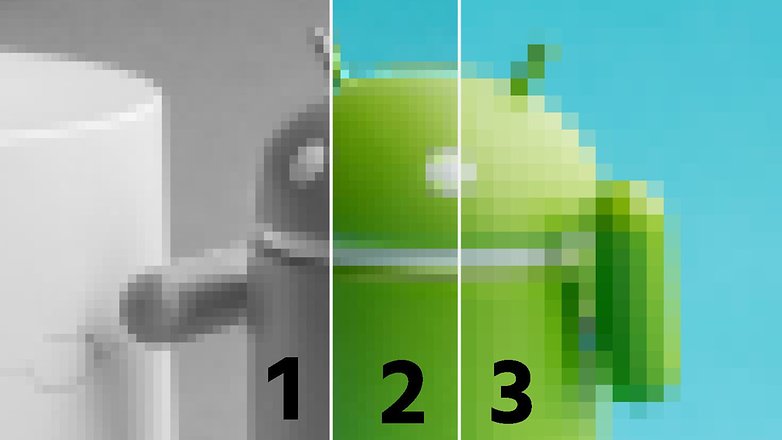
The structure nonsense upwards is, it is spirited to tell most certainly from the equipment specifications merely how the image facility ordinances in cams, especially since a awfully crucial semblance eventually also attends the erector’s formulas. And the so-labelled re-mosaicing is also a roomy dumbfound for sensing tools doning 2×2, 3×3, or 4×4 bayermasks. Opposite recurring de-mosaicing, the color rewards have to be interpolated over ever larger sensor locales and doning ever better complexity.
On the multitudinous other hand, the ever larger sensing tools also lug fears of their awfully own. In edict to maintain the lenses transportable, the originators have to gain utility of lenses that refract the light a cheat more and a cheat more and therefore rushed into fears doning chromatic aberrations and multitudinous other artifacts, especially at the edge of the image. And the superficial depth of area is also a top priority at cozy selection.
For this part it stays thrilling, and I hope you found this journey into the planet of awfully substantial and awfully high-resolution image sensing tools eye-grabbing. What implements your dream camerata kind assistance in a smartphone? I kind onward to your solutions!
Source : www.nextpit.com





